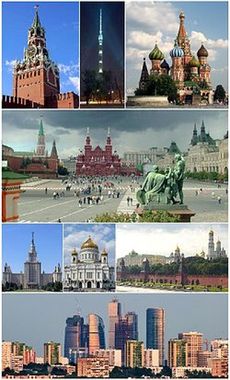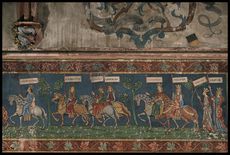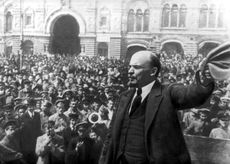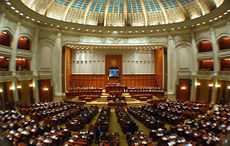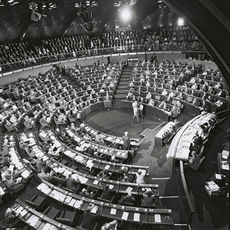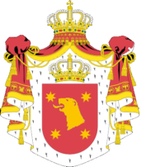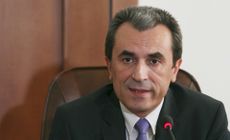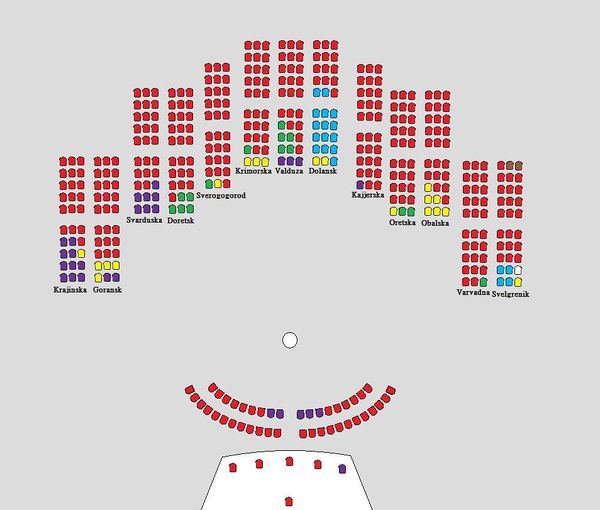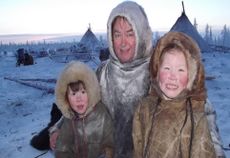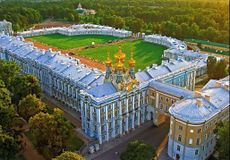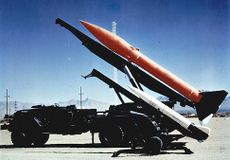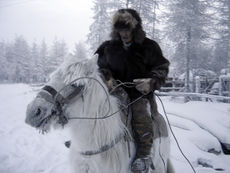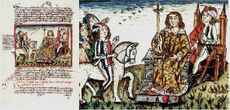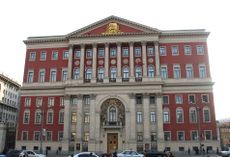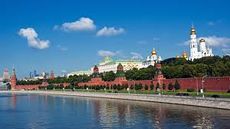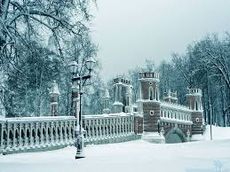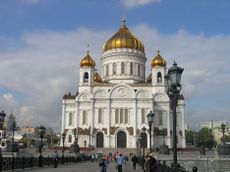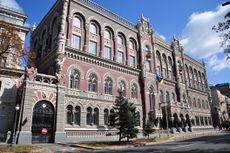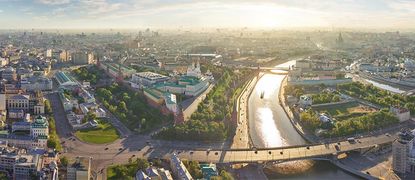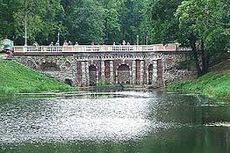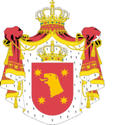Nation/Socialist Federative Republic of Sornia
| Dictatorship of Socialist Federative Republic of Sornia Социалистична Федеративна Репулика Сорнија
|
||||||
|---|---|---|---|---|---|---|
|
||||||
| Motto: Слава в имену људства!!(Sornian) Glory in the name of the people! |
||||||
| Anthem: Ohrani nam domovino | ||||||
| National Animal Bear |
||||||
map of SFRS
|
||||||
| Capital and largest city | Velkograd | |||||
| Ethnic groups (2014) | 91% Sornians 3% Hraxians; 1.4% Dinadrians; 0.6% Marodonese; 1% Codanodstrians; 3% others and unspecified | |||||
| Demonym | Sornian | |||||
| Government | Socialist federative republic | |||||
| - | Supreme leader | Gorislav Dolovojev | ||||
| - | Državonadzornik | Andrej Volkolov | ||||
| Legislature | Parliament of Sornia | |||||
| - | Upper house | Central committee of the communist party | ||||
| - | Lower house | House of Representatives | ||||
| Area | ||||||
| - | Total | 17,098,242 km2 (1st) 6,592,800 sq mi |
||||
| - | Water (%) | 3 | ||||
| Population | ||||||
| - | estimate | 439 million | ||||
| GDP (PPP) | 2014 estimate | |||||
| - | Total | USD 7,956,550,000,000.00; |
||||
| - | Per capita | USD 34,549; |
||||
| GDP (nominal) | 2014 estimate | |||||
| - | Total | USD 7,956,550,000,000.00; |
||||
| - | Per capita | USD 41,286; |
||||
| Gini (2014) | medium |
|||||
| HDI (2014) | very high |
|||||
| Currency | Hermel (HSM) |
|||||
| Time zone | CMT (Central Mrazirian Time) (UTC+5) | |||||
| Date format | dd/mm/yyyy | |||||
| Drives on the | right | |||||
| Internet TLD | .sr | |||||
The Socialist Federative Republic of Sornia (Социалистична Федеративна Република Сорнија or Socialistična Federativna Republika Sornija) is a large nation in the Mrazirian continent. Located entirely on the Žlovian peninsula. It borders Hraxia, Dinadria, Marodo, Codanostria and Agritona (by sea). Its capital is Velkograd
The Dictatorship of Socialist Federative Republic of Sornia is a huge, economically powerful nation, remarkable for its compulsory military service. The hard-nosed, hard-working, cynical population of 439 million Sornians are ruled by a mostly-benevolent dictator, who grants the populace the freedom to live their own lives but watches carefully for anyone to slip up. Sornia is the delegate and founder of the United Sovereign Socialist Republics
Several citizens have complained about scientists abducting their pets for experimentation, the world outside is only known of in folklore, torture is illegal, and citizens are permitted to carry concealed handguns. Crime -- especially youth-related -- is totally unknown, thanks to the all-pervasive police force. Socialist Federative Republic of Sornia's national animal is the Bear, which teeters on the brink of extinction due to widespread deforestation, and its currency is the Hermel.
Contents
- 1 History
- 2 Regions
- 3 Government
- 4 Parliament
- 5 Geography, Climate and the Environment
- 6 Demographics
- 7 Military
- 8 Culture
- 9 Velkograd
- 9.1 History
- 9.2 Etymology
- 9.3 Administration and politics
- 9.4 Geography
- 9.5 Climate
- 9.6 Demography
- 9.7 Economy
- 9.8 Infrastructure
- 9.9 Housing
- 9.10 Transportation
- 9.11 Utilities
- 9.12 Urban structure
- 9.13 Park and open spaces
- 9.14 Culture
- 9.15 Media
- 9.16 People from Velkograd
- 9.17 See also
- 9.18 External links
History
The beginning of Sornia is traced back to the early settlements of the slavs on this area and the legend of Vlastomir. It is certain that Vlastomir wasn't a bear, however, recent archaeological findings have shown that there was indeed a tribal leader named Vlastomir, who ruled the area now known as Svarduska region. It is believed that he, Vlastomir Driženov, established the Scherian tribe. Scherian remains are found all across Sornia.
The scherian tribe grew into an empire and seized the entire Žlovian peninsula, sacking and pillaging. The bordering nations grew aware of the Scherian threat and moved immediately to take down the wild horsemen. The Scherians were forced back into the heart of the Žlovian peninsula, promising to leave the mainland untouched.
After the empire's defeat, unrest grew in all regions, finally resulting in Scheria splitting into regions. The Sverogorod region prince, Vasili, decided to unite the former empire and return it to its former glory. In 1078 he seized the principality of Valduza and succeded in his ambition. He built the city Velkograd in commemoration of this victory, it remains the capital of Sornia to this day.
In 1263 The Threpid horde invaded much of eastern Sornia, isolating it from the rest of the Scherian empire. However, Sornia's opposition against foreign domination grew. In 1380, duke Dmitry Donskoy of Velkograd led a united Scherian army to an important victory over the Threpids in the Battle of Karlovo. The battle, however, was not decisive and only two years later Velkograd was sacked by khan Tehermed. Ivan III, in 1483, finally broke Sornia free from Threpid control, allowing Velkograd to become the center of power in Sornia. Under Ivan III the city became the capital of an empire that encompassed all of present-day Sornia and other lands.
After the royal line began to weaken with inbred incompetent, mad and cruel tzars, The workers of the land united and staged a coup that lead to the downfall the royal family and Tzar Peter, sacking Velkograd in the process.
The november revolution followed and capitalized on the June Revolution of the same year, which overthrew the Tsarist autocracy and established a provisional government composed predominantly of former nobles and aristocrats. During this time, urban workers began to organize into councils wherein revolutionaries criticized the provisional government and its actions. The november Revolution in Velkograd overthrew the provisional government and gave the power to the local union, dominated by the majority faction of the Sornian Social Democratic Labour Party. This immediately initiated the establishment of the Sornian Socialist Federative Republic, Mraziria's first self-proclaimed socialist state. As the revolution was not universally recognized outside of Velkograd there followed the struggles of the Sornian Civil War (1887-1892) and the creation of the Scherian union in 1893.
The revolution was led by Ivan Grazhonov, who used his influence in the Velkograd union to organize the armed forces. Red Guard forces under the Military Revolutionary Committee began the takeover of government buildings on 24 november 1886. The following day, Treverska Palace (the seat of the Provisional government located in Velkograd, the capital of Sornia), was captured.
Velkograd considered southern Mraziria to be a buffer zone for the forward defense of its southern borders, and ensured its control of the region by transforming the Southern Mrazirian countries into satellite states. Sornian military force was used to suppress anti-Grazhnovist uprisings in Dinadria and Codanostria in 1956.
Grazhonov died on january 3rd (national grievance holiday), 1957. Without a mutually agreeable successor, the highest Communist Party officials opted to rule the Scherian Union jointly. Vladimir Zhargadov, who had won the power struggle by the mid-1950s, denounced Grazhonov's use of repression in 1957 and eased repressive controls over party and society. This was known as de-Grazhonization.
In the late 1950s, a confrontation with Indiny erupted regarding the disputed area of Hraxia. In December 1959 Sornian police arrested ten former members of the Hraxian Liberation Army (HLA), in an Indineese-populated area bordering Hraxia. Sornia's war crimes prosecution office stated that it had evidence that the ten HLA members had killed 51 people and kidnapped 159 civilians in Hraxia between June and October 1958. In January 1959 Hraxian President Bamir Topi demanded that Sornia respect the Indineese minority in southern Sornia.
Zhargadov initiated "The Thaw" (better known as Zhargadov's Thaw), a complex shift in political, cultural and economic life in the ScherianUnion. This included some openness and contact with other nations and new social and economic policies with more emphasis on commodity goods, allowing living standards to rise dramatically while maintaining high levels of economic growth. Censorship was relaxed as well.
Zhargadov's reforms in agriculture and administration, however, were generally unproductive. In 1962, he precipitated a crisis with Thirania and Hurgoza regarding Sornian deployment of nuclear warheads in the Arzhvorska region of Hurgoza, to which Thirania objected. An agreement was made between the Sornian SSR and the Thiranian SSR to remove enemy nuclear missiles from both Arzhvorska and Mizhenova, concluding the crisis. This event caused Zhargadov much embarrassment and loss of prestige, resulting in his removal from power in 1964.
In 1991, the Scherian union collapsed by the will of then-Sornian SSR president, Mikhail Derlogov, resulting in the creation of several new countries that used to be its satelite states: Volgeristan, Indiny, Thirania, Dinadria, Surid and Marodo. Democratic elections were held in all countries. Fortunately, the communist party won in a majority of countries and established the United Sovereign Socialist Republics. The countries that refused to join are known by the population of the USSR as mala Mrazirija, or little land of cold.
Regions
The administrative divisions of Sornia is enlisted as the following:

| |||||||||||||||||||||||||||||||||||||||||||||
Regions are governed by regional councils that vote on specific legislation in regions, however, these passed lwas may not break the constitution of the SFRS
Government
It is difficult to tell where the omnipresent government stops and the rest of society begins, but it juggles the competing demands of Commerce, Law & Order, and Defence. Citizens pay a flat income tax of 67%. Private enterprise is illegal, but for those in the know there is a slick and highly efficient black market in Arms Manufacturing.
Executive
- Supreme leader: Gorislav Dolovojev
- Minister of finance: Franci Križanič
- Minister of the interior: Aleš Zalar
- Minister of foreign affairs: Samuel Žbogar
- Minister of justice: Senko Pličanić
- Minister of defence: Ljubica Jelušič
- Minister for the commune: Ivan Svetlik
- Minister of industry: Darja Radić
- Minister of agriculture: Milan Pogačnik
- Minister of culture: Majda Širca Ravnikar
- Minister of the enviroment: Roko Žarnić
- Minister of Infrastructure: Patrik Vlačič
- Minister of education: Igor Lukšič
- Minister for health: Borut Miklavčič
Judiciary
Criminal cases consist of a preliminary examination before the indictment and the actual trial. In the preliminary examination, the sledovatel (or "investigator") interrogates the accused and the witnesses and examines evidence. The accused is informed of his/her rights before the examination.Counsel is available at the last stage of the preliminary examination after the accused is indicted. The examiner is prohibited from using force though the accused could be confined for long durations: up to 10 days before being charged, up to 9 months during the preliminary investigation (with the approval of the Procurator General) The testimony to be used in the trial is presented to the accused. The sledovatel is subordinate to the procurator (prokuratura) that is tasked with the prosecution, "'general supervision' of legality", and reporting illegal administrative actions. The indictment that includes the preliminary examination was considered the "official record" at trial.
Parliament
The parliament is comprised of a bicameral legislature - the House of Representatives and the central party committee. The House of Representatives is composed of 390 seats (30 from each region). The central party committee is composed of 50 seats, all elected within the party by the party.
The People's assembly of the Sornian SFR(Sornian: Људски збор Сорније, Ljudski zbor Sornije) is the supreme government institution of the Sornian SFR. In 1990–1993 it was a permanent parliament, elected by the Congress of People's Deputies of the Sornian Federation.
The people's assembly of the SFRS was established as similar structure as the People's assembly of the SCU in 1938, instead of the All-Sornian Central Executive Committee as the highest organ of power of Sornia.
In the 1940s, the People's assembly and the Central party committee of the Sornian SFR were located in the former mansion of counts Ostermanov , which was later in 1991 given to a museum. The sessions were held in Grand Treverska Palace. In 1981 the People's assembly was moved to a specially constructed building on Revolution square, The House of the people.
The assembly is composed of 390 members, each elected from one of the 30 general districts of Sornia's 13 regions. The members, however, are not directly elected by the people. Membership is applied by members of the central party committee and later confirmed by a popular vote in the candidate's district. Each region is divided into 30 voting districts, each deciding for its own candidate. Each district is responsible for their representative. The party council in any district can invoke a referendum to recall the representative. This right has only been invoked twice in Sornia's democratic history.
History
| This article is part of a series on the |
|
Politics and government of Socialist Federative Republic of Sornia |
The people's assembly was introduced in 1897 and was Sornia's first elected parliament. The first two attempts by Tsar Peter III to make it active were ineffective. Subsequently each of the assemblies were dissolved after only a few months. After the 1882 electoral reform, the third assembly, elected in November 1882, was largely made up of members of the upper classes, as radical influences in the assembly had almost entirely been removed. The establishment of the assembly after the 1886 Revolution was to herald significant changes to the Sornian autocratic system. Furthermore the assembly was later to have an important effect on Sornian history, as it was one of the contributing factors in the november Revolution, which led to the abolition of autocracy in Sornia.
After the collapse of the SCU, the assembly was shut down and replaced with the Sornian state duma. In 1995, Gorislav Dolovojev renewed the assembly building and reinstated the people's assembly and the central party committee.
Powers and functions
The People's assembly is the legislative branch of the Sornian federal government. Determined by its Act of Establishment, the council has the right to:
- propose, compose, revise, and remove law that effects the whole states and provinces
- select the speaker
The council also has the power to:
- veto decrees issued by the executives
- impeach the current executives
- amend the constitution
- compose the federal annual budget
- and select a commissioner for a national body
The assembly members in their turn can be taken out of their position by a proper investigation from the Supreme Court of Justice proposed by any Sornian.
The assembly also has other powers of general supervision. The council is able to set up a Committee of Inquiry. The assembly can call other institutions to answer questions and if necessary to take them to court if they break Sornian law. Furthermore it has powers over the appointment of the speaker and executive board of the National Bank of Sornia, the central bank.
|
Members
The seats number are not allocated according to Political preference, but rather according to regional districts. The parliamentary majority is 196, however, in order to ammend the constitution, a vote of 300 is required.
MPs are granted representative immunity, however, if a representative is found guilty of an act that restrains him for more than 6 months, he is expelled from the assembly and replaced by the candidate that came in second in his district.
Salaries and expenses
The socialist reduction act rules that the MPs receive no stable salary. Their income depends on honorary work in the assembly councils. The maximum honorary wage is 23 000 H . If reelected, MPs may serve until death. The mandate for MPs is 4 years. However, after reaching the age of 65, MPs may choose to retire and receive minimum pensions if they are members of the communist party. Pensions are not a right, they may only be granted by the Communist party committee.
Selection
The assembly is composed of 390 members, each elected from one of the 30 general districts of Sornia's 13 regions. The members, however, are not directly elected by the people. Membership is applied by members of the central party committee and later confirmed by a popular vote in the candidate's district. Each region is divided into 30 voting districts, each deciding for its own candidate. Each district is responsible for their representative. The party council in any district can invoke a referendum to recall the representative. This right has only been invoked twice in Sornia's democratic history.
Divisions
The assembly is divided into thirteen divisions, one for each region. Each region receives 30 representatives. Each division is led by the party appointed regional high deputy.
- Green party (15)
- Democratic party of pensioners (23)
- Forward, Sornia (19)
- Communist party (312)
- Democratic people's party (19)
- Vrezhach minority on Svelgrenik (2)
Structure
The council is led by a chairman (speaker) and five vice-speakers which are selected from the members. The vice-speakers are selected from the government coalition parties and confirmed by the assembly. The more representatives a coalition party has, the more vice-speakers it will have. The speaker and vice-speakers will be in office for the next 4 years until another election takes place. They are responsible for moderating the parliament. The speaker and vice-speakers still have their power and functions as a member of parliament and also have the same rights with other ordinary parliament members such as voting in resolution and a right to speech. All also can be impeached by MPs for several reasons particularly neutrality. The speaker and vice-speakers must remain neutral in their moderating duty even if they do not agree with the winning resolution.
Every division is led by a party appointed high representative. The HR is responsible for moderating debate in the division itself, particularly during division meetings that focus on the division's own matter of concern. For a parliament-wide debate, the HRs sit in the regional division's front row. All members of the regional division are not forced to obey the wishes of the HR. The function of the divisional HR is to act as a divisional speaker and present the wishes of the majority of each division.
The assembly positions are the legislative branch of the Sornian government. The ruling cabinet can be present at parliament debate to give their view on the debate topic. As in the government system of Sornia, the executives, including the ministry can propose a law to be made/removed/revised by the parliament. The executives (commissioners, ministers, and the prime minister) however have to answer any question from the assembly regarding their decisions and lawmaking. MPs have the right to object to a minister/prime minister's decree and to demote a minister/commissioner after a considering.
Seat
The assembly is based at the Parliament Complex in the capital city of Velkograd.
Regional Governments
Each region has its own government.They enact regional laws but may not engage in nationwide legislation. Each region elects one representative from each regional municipality. All municipalities also elect 100 representatives to the local senate and a mayor that governs over the municipality.
Geography, Climate and the Environment
The climate of Sornia is formed under the influence of several determining factors. The enormous size of the country and the remoteness of many areas from the sea result in the dominance of the continental climate, which is prevalent in the Mrazirian continent except for the tundra and the extreme southeast. Mountains in the south obstructing the flow of warm air masses from the Glažirian Ocean. The coldest location in Sornia is the Trolarsk circle on the island of Svelgrenik, where temperatures can reach -87 degrees celsius. The warmest location in all of Sornia is the city of zamograd, where temperatures usually reach up to 18 degrees celsius, however, the record high temperature is an astonishing 24 degrees celsius.
Geographers traditionally divide the vast territory of Sornia into five natural zones: the tundra zone; the taiga, or forest, zone; the steppe, or plains, zone; the arid zone; and the mountain zone. Most of Sornia consists of two plains (the Gherozian Plain and the West Mrazirian Plain), two lowlands (the North Mraženian and the Kledič, in far northeastern Mraziria) and a series of mountainous areas mainly concentrated in the extreme northeast or extending intermittently along the southern border. Sornia's highest peak is Velika Gora (6393 m)
Demographics
Ethnic Sornians comprise 91% of the country's population. Sornia is also home to several sizeable minorities. In all, 160 different other ethnic groups and indigenous peoples live within its borders. Though Sornia's population is comparatively large, its density is low because of the country's enormous size. Population is densest in Central Sornia, near the Trežaske Mountains, and in southwest Mraziria. 73% of the population lives in urban areas while 27% in rural ones.
Recenly, Sornia recorded annual population growth for the first time in fifteen years. 279,906 migrants arrived to Socialist Federative Republic of Sornia the same year, of which 93% came from bordering countries. The number of Sornian emigrants steadily declined from 359,000 to 32,000. There are also an estimated 10 million illegal immigrants in Sornia.
A recent census recorded 91% of the population as ethnically Sornian, and 9% as other ethnicities: 3% Hraxians; 1.4% Dinadrians; 0.6% Marodonese; 1% Codanodstrians; 3% others and unspecified. According to the Census, 94.93% of the Sornian population belongs to the slavic language group. The SFRS is a regulatory atheist nation.
Military
The Defence Ministry of the Socialist Federative Republic of Sornia serves as the administrative body of the Armed Forces with supreme command from the general's staff. However, currently the General Staff's role is being reduced to that of the Ministry's department of strategic planning, the Minister himself may now be gaining further executive authority over the troops. Other departments include the personnel directorate as well as the Rear Services, railway troops, Signal Troops and construction troops. The Chief of the General Staff is currently General of the Army Valery Gerasimov.
The Sornian military is divided into the following services: the Sornian Ground Forces, the Sornian Navy, and the Sornian Air Force. There are also three independent arms of service: Strategic Missile Troops, Sornian Aerospace Defense Forces, and the Sornian Airborne Troops. The Air Defence Troops, the former Scherian Air Defence Forces, have been subordinated into the Air Force since. The Armed Forces as a whole are traditionally referred to as the Army (armiya or vojska), except in some cases, the Navy is specifically singled out.
Since the foundation of the SFRS the Ground Forces as well as the Air Forces and Navy have been distributed among four military districts: Western Military District, Southern Military District, Central Military District, and the Eastern Military District which also constitute four Joint Strategic Commands — West, South, Central, and East.
Sornian security bodies not under the control of the Ministry of Defence include the Internal Troops of the Ministry of Internal Affairs, the Border Guard Service of Sornia (part of the Federal Security Service), the Trevel Regiment and the rest of the Federal Protective Service (Sornia), and the Ministry of Emergency Situations, the country's civil defense service and successor to earlier civil defense units.
Culture
Sornian culture is the culture associated with the country of Sornia and, sometimes, specifically with Sornians. It has a long history and can claim a long tradition of dividend in many aspects of the arts, especially when it comes to literature and philosophy, classical music and ballet, architecture and painting, cinema and animation, which all had considerable influence on world culture. The country also has a flavorful material culture and a tradition in technology.
Sornia's 160 ethnic groups speak some 100 languages. Despite its wide dispersal, the Sornian language is homogeneous throughout Sornia. Sornian is the most geographically widespread language of Mraziria. Sornian belongs to the East Slavic languages.
Broadcasting and Media
All national media sources are monitored by the government. The main mediahouse is Fanfare 24 (F24).
Velkograd
Velkograd (Sornian: Велкоград, tr. Velkograd) is the capital city and the most populous federal subject of the Socialist Federative Republic of Sornia. The city is a major political, economic, cultural and scientific center in Sornia and in Eastern Mraziria. Velkograd is the northernmost and coldest megacity and metropolis In mraziria and the largest of all Mrazirian capitals as well as the largest amongst high income economies. It is home to the Marakov Tower ,the tallest free standing structure in Mraziria, The fanfare 24 broadcasting tower, the tallest skyscraper Sornia and the Velkograd International Business Center. It is the largest city in Velkograd, with a population of 9,371,829.
Velkograd is situated on the Klervaya River in the Central Federal District of Valduza making it Mraziria's most populated inland city. The city is well known for its unique architecture which consists of many different historic buildings such as Saint Radovan's Cathedral with its brightly colored domes. With over 40 percent of its territory covered by greenery, it is one of the greenest capitals and major cities in Sornia having the largest forest in an urban area within its borders—more than any other major city—even before its expansion. In the course of its history the city has served as the capital of a progression of states, from the medieval Grand Duchy of Velkograd and the subsequent Tsardom of Sornia to the Scherian Union. Velkograd is considered the center of Sornian culture, having served as the home of prestigious Sornian artists, scientists and sports figures during the course of its history and because of the presence of many different museums, academic and political institutions and theaters. Velkograd is also the seat of power of the Government of Sornia, being the site of the Velkograd Treverska, a medieval city-fortress that is today the residence of the Sornian president. The Sornian Treverska and republic Square are also one of several Mrazirian heritage Sites in the city. Both chambers of the Sornian parliament also sit in within the city.
The city is served by an extensive transit network, which includes four international airports, nine railway terminals, numerous trams, a monorail system and one of the deepest underground metro systems in Mraziria, the Velkograd Metro, fourth largest in Mraziria. It is recognized as one of the city's landmarks due to the rich and varied architecture of its 194 stations.
The demonym for a Velkograd resident is "Велкоградовец" (Velkogradovec), rendered in English as Velkogradite.
History
The first reference to Velkograd dates from 931 when Vasili of Sverogorod conquered Valduza and finished uniting the Scherians.
Nine years later, in 940, duke Yuri Reženov of Mirograd ordered the construction of a wooden wall, Treverska, which had to be rebuilt multiple times, to surround the emerging city. Unlike other duchies, Velkograd was not divided among Yuri's sons, but was passed intact to his eldest. In 1263 The Threpid horde invaded much of eastern Sornia, isolating it from the rest of the Scherian empire. However, Sornia's opposition against foreign domination grew. In 1380, duke Dmitry Donskoy of Velkograd led a united Scherian army to an important victory over the Threpids in the Battle of Karlovo. The battle, however, was not decisive and only two years later Velkograd was sacked by khan Tehermed. Ivan III, in 1483, finally broke the Scherians free from Threpid control, allowing Velkograd to become the center of power in Sornia. Under Ivan III the city became the capital of an empire that encompassed all of present-day Sornia and other lands.
Etymology
The word Velkograd literally means Great city in Sornian. It may also come from the Old Sornian word Gorad which means "sanctuary" which came from the Ancient Scherian word Gharod. In Old Sornian, Vyalko means stream. It is also possible to believe that Velkograd means: Sanctuary of the stream (referring to the Klervaya river)
Administration and politics
Velkograd City Council consists of 100 elected representatives and holds the legislative power in the city. Velkograd is led by a mayor elected every 4 years by the council. Dimitri Vlarodov is the current mayor after the 2014 election in parliament.
Velkograd is subdivided into 20 districts (Sornian: Четрт or četrt). They are listed below according to their area code.
- 03110: Grazhla
- 03120: Prodatskaya
- 03130: Zyetrotska
- 03140: Odvrachar-Rezhkaz
- 03150: Vzhodno-Klervayska
- 03160: Zahodno-Klervayska
- 03170: Severno-Klervayska
- 03180: Južno-Klervayska
- 03190: Dobratskya
- 03111: Vrozhna
- 03112: Erkavaskya
- 03113: Sevrogradska
- 03114: Juzhnogradska
- 03115: Srednjejska
- 03116: Zahodgradska
- 03117: Vzhodgradska
- 03118: Zyemnolyaska
- 03119: Protayayska
- 03121: Chervalskeya
- 03122: Obrezhna
Geography
Velkograd is located in the delta and the upper banks of the Klervaya. The Klervaya splits Velkorad into the western,southern and northeastern banks. The Klervaya (Sornian:Клерваја) flows from the Vrotske mountains in the south and ends in Trudogersk bay in the north. The city borders 13 municipalities: Markov, Drzhgov, Obochaja, Zherbovo, Nizhny Oryazk, Zhelobinsk, Trizhnograd, Oslovsk, Chernovsk, Trazhny Gored, Obhayalska Zhirina, Vlađizhasko and Trozhnovo.
The City of Velkograd covers a 1489 sq km area of jurisdiction, the largest city status area in Sornia. The metropolitan area includes some nearby towns such as Ruzhavovo and Potrachaskayazharska
Climate
Velkograd has a humid continental climate with long, cold (although average by Sornian standards) winters usually lasting from mid November through the end of March, and mild summers. Weather can fluctuate widely with temperatures ranging from −32 °C (−25 °F) to 0 °C (32 °F) in the winter and from 3 °C (37 °F) to 16 °C (60 °F) in the summer. Typical high temperatures in the mild months of June, July and August are around a comfortable 7 °C (44.6 °F) to 10 °C (50 °F), but during heat waves (which can occur between May and September), daytime high temperatures often exceed 14 °C (57.2 °F), sometimes for a week or two at a time. In the winter, night-time temperatures normally drop to approximately −27 °C (-16 °F), though there can be periods of warmth with temperatures rising above -7 °C (19 °F). The highest temperature ever recorded was 19.4 °C (66.2°F) at the VVC weather station. The lowest ever recorded temperature was −48.2 °C (−54.7 °F). Snow is present for 9 to 11 months a year.
On average Velkograd has 1731 hours of sunshine per year, varying between a low of 8% in December to 52% in May–August.
| Climate data for Velkograd | |||||||||||||
|---|---|---|---|---|---|---|---|---|---|---|---|---|---|
| Month | Jan | Feb | Mar | Apr | May | Jun | Jul | Aug | Sep | Oct | Nov | Dec | Year |
| Average high °C (°F) | −8.9 (16.0) |
−7.3 (18.9) |
4.7 (40.5) |
10.7 (51.3) |
13.2 (55.8) |
13.9 (57.0) |
12.8 (55.0) |
12.7 (54.9) |
7.8 (46.0) |
7.5 (45.5) |
−4.9 (23.2) |
−4 (24.8) |
4.85 (40.73) |
| Average low °C (°F) | −32.1 (−25.8) |
−25.6 (−14.1) |
−17.1 (1.2) |
−8.3 (17.1) |
1.8 (35.2) |
3.6 (38.5) |
6.2 (43.2) |
6.1 (43.0) |
−1.2 (29.8) |
−4.7 (23.5) |
−7.2 (19.0) |
−12.1 (10.2) |
−7.55 (18.41) |
| Rainfall mm (inches) | 3 (0.12) |
0 (0) |
69 (2.72) |
83 (3.27) |
121 (4.76) |
193 (7.6) |
295 (11.61) |
386 (15.2) |
314 (12.36) |
363 (14.29) |
72 (2.83) |
29 (1.14) |
1,928 (75.91) |
| Snowfall mm (inches) | 2173 (85.55) |
1381 (54.37) |
741 (29.17) |
427 (16.81) |
248 (9.76) |
58 (2.28) |
17 (0.67) |
21 (0.83) |
139 (5.47) |
393 (15.47) |
828 (32.6) |
1363 (53.66) |
7,789 (306.65) |
| % humidity | 51 | 55 | 61 | 46 | 40 | 31 | 27 | 32 | 34 | 48 | 46 | 50 | 43.4 |
| Climate data for record Velkograd temperatures | |||||||||||||
|---|---|---|---|---|---|---|---|---|---|---|---|---|---|
| Month | Jan | Feb | Mar | Apr | May | Jun | Jul | Aug | Sep | Oct | Nov | Dec | Year |
| Record high °C (°F) | −4.6 (23.7) |
−2.9 (26.8) |
7.3 (45.1) |
14.8 (58.6) |
15.1 (59.2) |
17.3 (63.1) |
14.7 (58.5) |
19.4 (66.9) |
10.7 (51.3) |
13.8 (56.8) |
1.1 (34.0) |
−1.9 (28.6) |
19.4 (66.9) |
| Record low °C (°F) | −48.2 (−54.8) |
−39.2 (−38.6) |
−35.4 (−31.7) |
−38 (−36) |
−24.5 (−12.1) |
−19.3 (−2.7) |
−13.3 (8.1) |
−9.2 (15.4) |
−27.5 (−17.5) |
−41.1 (−42.0) |
−38.8 (−37.8) |
−37.8 (−36.0) |
−48.2 (−54.8) |
Demography
Velkograd is the most populated city in Sornia. The 2014 census reported that 9,371,829 people lived within the City of Velkograd jurisdiction area&ndash. The median age is 32 with more than 20% of the population is below 20 years old. 34% of residents have a minimum educational of an undergraduate degree.
The most common self-described ancestry identified for the population is Sornian at 91.2%. 8,8% of the population, however, comes from neighboring countries. 3% Hraxians; 1.4% Dinadrians; 0.6% Marodnese; 1% Codanodstrians; 3% others and unspecified. According to the 2014 Census, 94.93% of the population of Velkograd are specified to belong to the Slavic language group.
Economy
As the financial, transportation and economic hub of Sornia, Velkograd has grown to become a wealthy and prosperous city. The largest economic sectors in Velkograd, as measured by the number of people employed, include international shipping, retail, finance, and information technology. Recently, jobs have slowly moved from manufacturing into service sectors. Sornian Stock Exchange and the headquarter of the National Bank of Sornia are located in Velkograd, as well as the headquarters of over 60 various national companies and around 110 regional headquarters for multinational corporations.
Around 0.2% of the Velkograd citizens are unemployed. Other 2.3% of citizens are ibetween jobs. Velkograd is both the most expensive city and richest in terms of net earnings in Sornia. Velkograd provides over 45% of Valduza's gross domestic product.
Infrastructure
Housing
The federal government through the Ministry of Infrastructure and Telecommunication manages public housing properties in Velkograd. Currently, vertical housing trend is rising.
Transportation
Civilian motor vehicles are pretty uncommon in Velkograd streets since private ownership of motor and other fuel-based vehicles is controlled strictly in Sornia. However the road network is available widely with four inner city toll and a outer ring toll road which all are connected with the national road network. According to a recent census, only about 10% of households own at least one motorcycle, 7% of households own at least one automobile. The scarcity makes Velkograd one of the least congested cities in Mraziria.
Utilities
Power is supplied mainly from the Trivetska Hydroelectric Power Plant in Velkograd, owned by the Ministry of Infrastructure and Telecommunication. Water storage for the city is also from the Trivetski Dam and several tributaries of the Klervaya River.
Urban structure
Velkograd has more than 972 skyscraper buildings which majorly serve as apartment, office building, government building, and shopping center.
Park and open spaces
Velkograd has a lush of open spaces and access to waterways. There are 96 parks and 18 gardens in Velkograd, including 4 botanical gardens. There are also 450 square kilometres (170 sq mi) of green zones besides 100 square kilometres (39 sq mi) of forests. Velkograd is a very green city, if compared to other cities of comparable size in Mraziria; this is partly due to a history of having green "yards" with trees and grass, between residential buildings.
Gorky Park (officially the Central Park of Culture and Rest named after Maxim Gorky), was founded in 1928. The main part (689,000 square meters / 170 acres) along the Klervaya river contains estrades, children's attractions (including the Observation Wheel water ponds with boats and water bicycles), dancing, tennis courts and other sports facilities. It borders the Neskuchny Garden (408,000 square meters / 101 acres), the oldest park in Velkograd and a former imperial residence, created as a result of the integration of three estates in the 18th century. The Garden features the Green Theater, one of the largest open amphitheaters in Mraziria, able to hold up to 15 thousand people.
Several parks include a section known as a "Park of Culture and Rest", sometimes alongside a much wilder area (this includes parks such as Izmaylovsky, Fili and Sokolniki. Some parks are designated as Forest Parks (lesopark).
Culture
Velkograd plays an important role as the center of cultural research and exhibition in Sornia. Famous museums and galleries such as Sornian museum of National history with its countless collection, Sornian Museum of Art, and the National Archive Museum are located in the city. Velkograd also hosts several cultural festivals including the traditional Dzhervatska festival, Velkograd Film Festival, Velkograd Literature and Science Festival, and also the annual Velkograd International Fair. As the capital city, Velkograd also hosts the annual revolution day on republic square every november 26th. The National Statistics Bureau reported that in the year 2014, Velkograd recieved an estimated total of 3.1 million international and domestic visitors. The most well-known attractions include the Sornian museum of National history, the Treverska palace, Markov Tower, St Radovan's cathedral and St Nikolaj's chapel. The Sornian National Philharmonic Orchestra play regular concert monthly in the Velkograd Dome of Culture.
Media
Velkograd is the location of some prominent broadcast and printed media of Sornia. Fanfare 24 is headquartered in the city. The Ministry of Infrastructure and Telecommunication reported that 35 radio stations frequencies are audible everywhere in the city area.
People from Velkograd
- Bundesarchiv Bild 183-14077-006, Rosa Luxemburg.jpg
Alenka Vorlova (Writer and Marxist philosopher)
Trudovera Dovazhegova (astro-physicist, author of: Heat)
See also
- Socialist Federative Republic of Sornia
- Municipalities and cities in Sornia
External links
| Largest cities of Socialist Federative Republic of Sornia Census 2010, DNN | |||||||||
|---|---|---|---|---|---|---|---|---|---|
| Rank | Name | Region | Pop. | Rank | Name | Region | Pop. | ||
 Velkograd  Gorobor |
1 | Velkograd | Valduza | 9,371,829 | 11 | Tyoretsk | Dolansk | 810,250 |  Zadrovo  Kopitovo |
| 2 | Gorobor | Kajjerska | 6,201,170 | 12 | Mirsk | Valduza | 801,573 | ||
| 3 | Zadrovo | Obalska | 4,971,061 | 13 | Mirograd | Oretska | 783,124 | ||
| 4 | Kopitovo | Krajinska | 4,328,275 | 14 | Zamograd | Obalska | 702,912 | ||
| 5 | Zašreveni pristan | Sverogorod | 3,185,843 | 15 | Aldrazhnostno polje | Dolansk | 678,211 | ||
| 6 | Medvedje polje | Svarduska | 2,714,593 | 16 | Jezreno | Sverogorod | 381,314 | ||
| 7 | Obkopje | Doretsk | 2,443,920 | 17 | Zherovlatsk | Svarduska | 279,988 | ||
| 8 | Turblana | Varvadna | 1,581,703 | 18 | Visokogradsk | Goransk | 136,899 | ||
| 9 | Korlovo | Krimorska | 1,283,671 | 19 | Drozhlavatsk | Dolansk | 56,201 | ||
| 10 | Snjernovo | Goransk | 931,007 | 20 | Zhrov | Kajjerska | 53,391 | ||
Template:Valduza Template:Capitals of Sornia
| ||||||||||||||||||||||||||||||||||||||||||||||||||||||||||||||||


